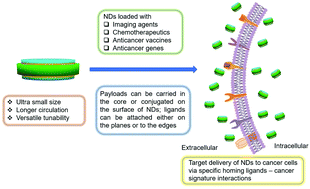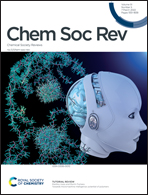Nanodiscs: a versatile nanocarrier platform for cancer diagnosis and treatment
Abstract
Cancer therapy is a significant challenge due to insufficient drug delivery to the cancer cells and non-selective killing of healthy cells by most chemotherapy agents. Nano-formulations have shown great promise for targeted drug delivery with improved efficiency. The shape and size of nanocarriers significantly affect their transport inside the body and internalization into the cancer cells. Non-spherical nanoparticles have shown prolonged blood circulation half-lives and higher cellular internalization frequency than spherical ones. Nanodiscs are desirable nano-formulations that demonstrate enhanced anisotropic character and versatile functionalization potential. Here, we review the recent development of theranostic nanodiscs for cancer mitigation ranging from traditional lipid nanodiscs encased by membrane scaffold proteins to newer nanodiscs where either the membrane scaffold proteins or the lipid bilayers themselves are replaced with their synthetic analogues. We first discuss early cancer detection enabled by nanodiscs. We then explain different strategies that have been explored to carry a wide range of payloads for chemotherapy, cancer gene therapy, and cancer vaccines. Finally, we discuss recent progress on organic–inorganic hybrid nanodiscs and polymer nanodiscs that have the potential to overcome the inherent instability problem of lipid nanodiscs.



 Please wait while we load your content...
Please wait while we load your content...